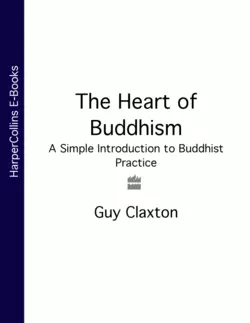The Heart of Buddhism: A Simple Introduction to Buddhist Practice

Guy Claxton
Тип: электронная книга
Жанр: Книги по философии
Язык: на английском языке
Стоимость: 777.34 ₽
Статус: В продаже
Издательство: HarperCollins
Дата публикации: 16.04.2024
Отзывы: Пока нет Добавить отзыв
О книге: This classic Buddhist title explains why Buddhism is now so appropriate to our personal, social and global situation.Unlike many other religions, Buddhism is very well suited to a secular age. It offers a practical, comprehensible way to achieve peace of mind and generosity of spirit. Buddhism requires no adherence to obscure beliefs, and is mainly concerned with improving the quality of our everyday life.Guy Claxton’s fascinating book explains all the ways in which Buddhism is so appropriate to our particular times and global predicament. It describes how we can help ourselves individually, with a teacher, or in a group, through understanding, meditation and communication.